Recently I've been trying to understand how multiple signals can travel along a coax cable. Indeed, I have already read "How are multiple signals propagated in a coaxial cable?", but it doesn't seem to be exactly the same question, nor is it specific enough, so please don't mark this as a dupe.
So how exactly are multiple signals transmitted on different frequencies? For example, I'd like to send data between two devices using a 50-Ohm cable, and I have a 7MHz carrier and a 11MHz carrier. Do I simply couple the signals to the cable using 50-Ohm resistors? Or capacitors? Transformers? Or some kind of push-pull line driver?
In addition, what are the typical voltage levels for coax? I can only find maximum ratings. If I were to design a device
Finally, how are signals sent bidirectionally? I suppose I could implement an EIA RS-232 or RS-422 where I could simply send binary data as negative and positive signals. However, I'd imagine that it would only suffice for sending data in one direction. If the two devices is is trying to exchange data, and one device is trying to output +1V while the other device is trying to send -1V back, won't there be some sort of contention, so to speak? I could do an I2C and have the "master" device coordinate the whole thing to send signals both ways, but I really want to do it the right way and send RF signals.
Thanks for your help.
